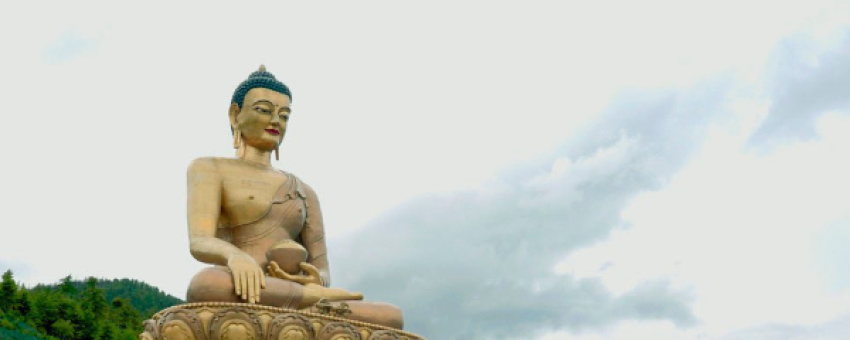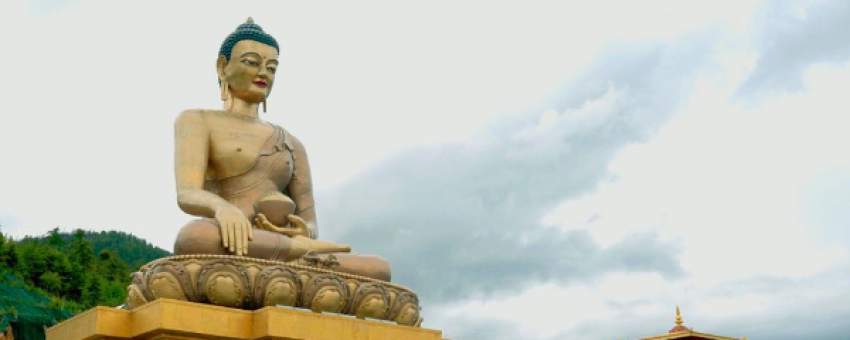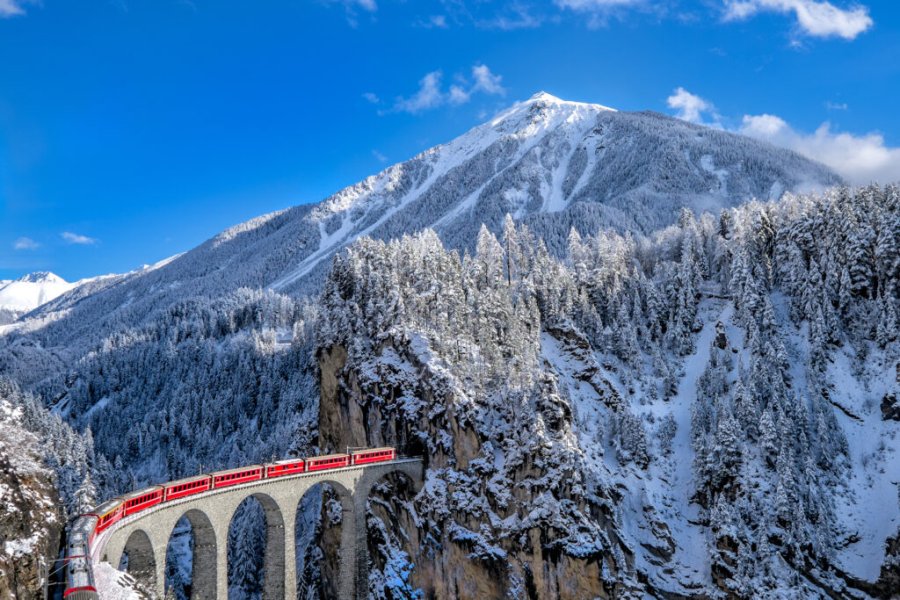Discover Buddhism
Founded in 1991, Bhutan Tourism Corporation Limited (BTCL) is the oldest tourism agency in Bhutan.
As the kingdom's leading agency, BTCL has welcomed over 55,000 visitors with the best possible travel experiences, from cultural visits to treks, international conferences to tailor-made programs, all guided by highly qualified Bhutanese experts.
BTCL offers a selection of superb hotels, guesthouses and restaurants, as well as a fleet of safe and comfortable vehicles to ensure enjoyable travel. As a pioneer of tourism in Bhutan, BTCL enjoys an excellent reputation for its innovative, personalized and professional services, offering unique itineraries for unforgettable journeys.
Highlights of the trip
During your stay you can enjoy the following highlights: Culture / Heritage, Faune and flora, Discovery, Adventure / Sports & Leisure, Nature travel.
Best months to go
The best time(s) to go is/are : Mars, Avril, Mai, Octobre, Novembre.
How to get there?
You can get there by Plane.
BHUTAN TOURISM CORPORATION LIMITED
Travel suitable for :
Detail of the stay : Discover Buddhism - 11 days
From Paro to Thimphu - Arrival: Paro international airport
Steps: Paro
Meet your guide and driver after clearing immigration and customs.
Approx. 1 hour 30 minutes drive to Thimphu, the capital of Bhutan.
Meet your guide and driver in the hotel lobby.
Memorial Chorten: built in 1974 in memory of the third king, His Majesty Jigme Dorji Wangchuck, it houses a multi-storey Stupa and numerous paintings giving an insight into Buddhist philosophy.
Visit to Changangkha Lhakhang: an ancient temple built in the thirteenth century by Lam Phajo Dugom Zhigpo, situated on a ridge above the town.
Visit to Takin Reserve: where you can see Bhutan's national animal (Takin).
In the evening, visit Tashichho Dzong (the fortress of glorious religion): Tashichho Dzong houses His Majesty's secretariat and the central body of monks. You can see the National Assembly building across the river.
Cultural visit to Thimphu
Steps: Thimphu
Visit the Royal Textile Academy: which provides an excellent introduction to the techniques, and style of various textiles woven in the country along with exhibitions of the national dress ‘gho’ for men and ‘Kira’ for women.
Institute of Zorig Chusum (commonly known as the Painting School) where you can see young children learning and practicing the ancient arts and crafts of Bhutan. Zorig Chusum literally means the “thirteen traditional arts and crafts”.
Cultural visit (museum, monastery, etc.)
Steps: Punakha
At Dochula, you will also see a unique cluster of 108 Namgyel Khangzang Chortens that spiral up to the main Chorten known as the “Druk Wangyal Khangzang Chortens”. Her Majesty The Queen Mother, Ashi Dorji Wangmo Wangchuck, dedicated these chortens as a tribute and monument to the selfless service and visionary leadership of our Fourth King, His Majesty Jigme Singye Wangchuck. These chortens are a new landmark for travelers as they cross Dochula, the first mountain pass into the interior of the country.
Chimi Lhakhang: Upon reaching the village of Sopsokha, you can walk about 20 minutes across the rice fields up to the monastery, Chimi Lhakhang. It was built by Lama Drukpa Kuenley (also known as the Divine Madman by the West). It is believed that childless women who visit the monastery will conceive after receiving the ‘wang’ (blessing).
Visit Punakha Dzong: located strategically at the junction of the Pho Chu and Mo Chu rivers, built-in 1637 by Zhabdrung Ngawang Namgyel. The Dzong served as the religious and administrative center of Bhutan until the mid-1950s. Here, the dual system of government was introduced in the early 17th century when the Bhutanese enthroned the First King.
Punakha - Bumthang
Steps: Punakha
Continuation to Trongsa via Wangduephodrang: Wangduephodrang sits on a ridge overlooking the Puna Tsang River. The Wangduephodrang Dzong, hit by fire in June 2012, offers breathtaking views of the valleys below. The district is famous for its bamboo, slate and stone carvings.
Crossing the Pelela Pass (3,400 m) through the Jigme Singye Wangchuck National Park, separating Western Bhutan from Central Bhutan. Then the Nikka Chu bridge leads to Trongsa, in central Bhutan. Near the stream, the white Chendebji Chorten stupa bears witness to Lam Shida's subjugation of a demon.
Visit the Trongsa Dzong, built in 1647 by Zhabdrung Ngawang Namgyel. This labyrinth of temples governs the local community. An architectural masterpiece, it is visible from all approaches to Trongsa, declaring its strength and majesty.
Continue on to Bumthang, crossing the Yotong La pass (3,425 m). Stop off at Zungney (2,750 m) to admire the traditional weavings of Yathra, a woollen fabric of many colors and patterns.
Bumthang (2,800 m) is a spectacular valley at the heart of Buddhism. Great masters have meditated here, leaving numerous sacred sites. Guru Rimpoche and his line of Tertons gave birth to numerous temples in the valley.
Visit the temples
Steps: Vallée De Bumthang
Visit Kurjey Lhakhang: Consisting of three temples, the one on the right was built in 1652 on the rock face where Guru Padmasambhava meditated in the 8th century. The middle temple is built on the site of a cave containing a rock with the imprint of Guru’s body. The temple on the left was built in the 1990s by Her Majesty The Royal Grandmother, Ashi Kesang Wangmo Wangchuck. These three temples are surrounded by a 108 chorten wall.
Visit Jakar Dzong: According to legend, in 1549, when the lamas assembled to select a site for a monastery, a big white bird rose suddenly in the air and settled on a hill. This was interpreted as an important omen, and the hill was chosen as the site for a monastery – Jakar Dzong, which roughly translates as ‘Castle of the White Bird’.
Tamshing Lhakhang: It is located opposite Kurjey Lhakhang on the other side of the river. This temple was founded in 1501 by Terton Pema Lingpa, the reincarnation of Guru Padmasambhava. The monastery has very ancient religious paintings like the 1,000 Buddhas and 21 Taras (female form of Buddhisatava). The temple was restored at the end of the 19th century.
Trekking, visit to the Kunzandrak Goemba monastery, villages and local culture.
Steps: Vallée De Bumthang
Kunzandrak Goemba: Founded by Pema Lingpa. The monastery can be viewed from the road. Upon reaching Tang, take an hour’s hike up to the old Ugyenchholing Palace which has now been converted into a museum.
After visiting the museum, drive the same way and en route, visit Merbartsho (Burning Lake): which is actually a wide spot in the Tang Chhu. Terton Pema Lingpa found several of Guru Rimpoche’s hidden terma (treasures) here. A wooden bridge crosses the river and is a good vantage point to look down into the lake.
Take a day trip to visit Ura, southeast of Jakar: It is the highest of the four valleys in Bumthang. Ura Valley is about 48 km, an hour and a half drive from the main town. Wide open spaces characterize the valley that sits in the shadow of the Thrumsingla Pass, which separates the east from the west of the Kingdom.
Visit Ura Lhakhang: which will give you a notion of the lifestyle of central Bhutanese people. Stop at some local houses in the Ura village to see the daily ways of the villagers.
Tourism in Punakha
Steps: Punakha
Drive towards Nezergang
Khamsum Yueley Namgyel Chorten: hike about 1 hour 30 minutes to the Chorten. Built by The Queen Mother, Her Majesty Ashi Tshering Yangdon Wangchuck in 1999 for the protection of the country and universal peace in the world.
Visit Chimi Lhakhang: Upon reaching the village of Sopsokha, you can walk about 20 minutes across the rice fields up to the monastery, Chimi Lhakhang. It was built by Lama Drukpa Kuenley (also known as the Divine Madman by the West). It is believed that childless women who visit the monastery will conceive after receiving the ‘wang’ (blessing)Punakha to Paro
Steps: Punakha
Enroute visit Punakha Dzong: Located strategically at the junction of the Pho Chu and Mo Chu rivers, built-in 1637 by Zhabdrung Ngawang Namgyel. The Dzong served as the religious and administrative center of Bhutan until the mid-1950s. Here, the dual system of government was introduced in the early 17th century when the Bhutanese enthroned the First King.
In Paro, visit Rinpung Dzong (the fortress on a heap of jewels): The Fortress on a Heap of Jewels” was built by Zhabdrung Ngwang Namgyel in 1646. Considered to be one of the finest examples of architecture, the Dzong also known as Paro Dzong houses administrative offices of the valley.Visit Paro
Steps: Paro
Taa Dzong: This conch-shaped fortress in Paro is located right above the Rinpung Dzong. Taa Dzong means the fortress of watchtower and it was converted into the National Museum of Bhutan under the command of the 3rd King of Bhutan, Jigme Dorji Wangchuck in the 17th Century.
Enroute to Paro town, visit Kyichu Lhakhang. Said to have been built by King Songtsen Gampo of Tibet. It is believed that it holds down the left foot of an ogress, so large that it covers Bhutan and most of eastern Tibet. It is one of the 108 temples built by the Tibetan King in one day throughout the region of the Himalayas; according to legend. The temple also houses a museum dedicated to the late Dilgo Khyentse Rimpoche and hosts a range of artifacts belonging to the Rimpoche.Trekking to Taktsang Monastery
Steps: Paro
Day hike to Taktsang Monastery: Taktsang meaning “Tiger’s Nest”, is built around a cave in which Guru Rimpoche (also known as Guru Padmasambhava) meditated. The monastery clings seemingly impossibly to a cliff at 914m above the valley floor.
For the local people, it is a place of pilgrimage, but for a tourist, a hike up to the viewpoint opposite the monastery is exhausting, thrilling, and mystical. Legend has it that Guru Rimpoche is said to have flown to the site of the monastery on the back of a tigress and meditated in the cave.







